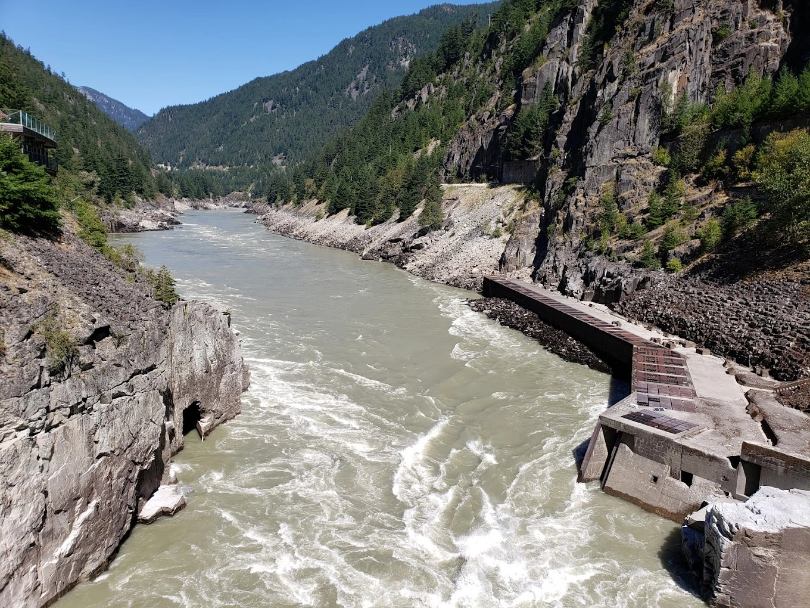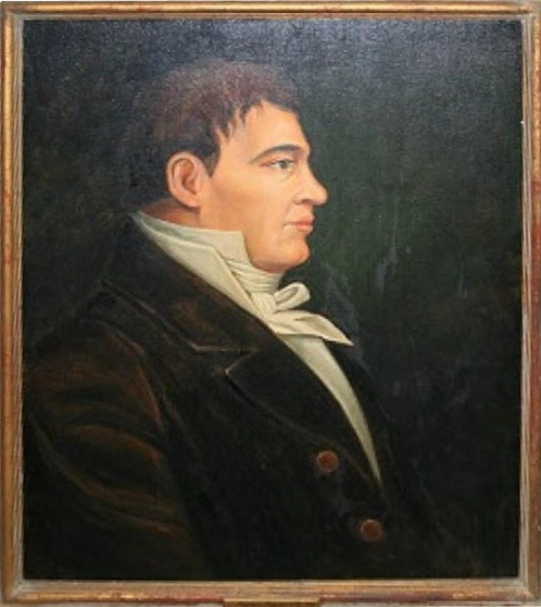History of Hell’s Gate
In 1970 General construction of the site began from concrete work to the stringing of the cables. The upper and lower terminal buildings are both anchored by bolts that go back 20 feet into the bedrock.
This airtram is Swiss built by Habegger Engineering Works of Thun, Switzerland and one of their mechanics came over to help set up the system. Fiber rope was shot across the canyon with a crossbow from the lower terminal to the upper cliff edge (half way) and then from the cliff to the upper terminal. Once the rope was in place, a small cable was attached and winched to the upper terminal, and then the 44mm wide steel track rope. It took many hours to get this 1000′ track rope in place as it was not allowed to touch any other metal or the ground.
This airtram is Swiss built by Habegger Engineering Works of Thun, Switzerland and one of their mechanics came over to help set up the system. Fiber rope was shot across the canyon with a crossbow from the lower terminal to the upper cliff edge (half way) and then from the cliff to the upper terminal. Once the rope was in place, a small cable was attached and winched to the upper terminal, and then the 44mm wide steel track rope. It took many hours to get this 1000′ track rope in place as it was not allowed to touch any other metal or the ground.
Simon Fraser’s exploration through the Gorge
The first written history of Hell’s Gate is found in the explorer Simon Fraser’s journal. There he describes this narrow passage as an “awesome gorge”.
If you can for a moment, put yourself in Fraser’s scared boots and unsturdy craft, you can well imagine the awesome picture Hell’s Gate presented. Here the towering rock walls of the Fraser River plunge toward each other forcing the waters through a passage only 110 feet wide (35 m).
The International Hell’s Gate Salmon Fishways
were opened in 1945. Their effect on migrating salmon can be shown throughout the experience at the Quesnel Lake System. In 1941 only 1100 fish reached the spawning beds, by 1973 the number had increased to over 250,000 fish, and in 1981 this number had increased again to over 800,000 fish! These increased numbers mean to the fishermen a catch of several million fish.
The survival rate of young salmon has been improved through the construction of artificial spawning channels. These serve the sockeye population, while a further channel at Seton Creek has been built for pinks. The Weaver Creek Channel, completed in 1965, produced, in its first five years of operation, a total catch to fishermen of over 600,000. The Fisheries Commission hopes, over time, to restore the Fraser River to its pre-1913 status as a salmon stream. For more good info, check out this informational site: http://www.saxvik.ca/
In 1913 The Canadian National Railway hewed it’s way through the Rockies and the treacherous Fraser Canyon. While blasting for the passage of the railway, a rock slide was triggered which partially blocked the Fraser River at Hell’s Gate. A dramatic drop in the salmon run resulted. Thirty years of work by dedicated scientists and several years’ construction were required to repair man’s damage. Today Hell’s Gate fishways, built by a joint Canadian – United States Commission and completed in 1966, stand as monument to man’s dedication and ingenuity.
In 1917 the International Pacific Fisheries Commission was formed by Canada and the United States. Since that time, efforts have been made to improve the run of salmon to the spawning beds. This was brought about by the construction of fishways. These fishways help the salmon through the difficult sections of the Fraser River System. Fishways are now at Yale, Hell’s Gate and Bridge River Rapids.The Hell’s Gate Fishways
The Hell’s Gate and Fraser Canyon Experience
Experience the awe-inspiring Fraser Canyon and the immensely powerful Fraser River in the Hell’s Gate Airtram. The Hell’s Gate Experience is one of the top tourism activities in British Columbia, visited by people all over the world. The airtram is perfect for group parties or a family tourist destination.


